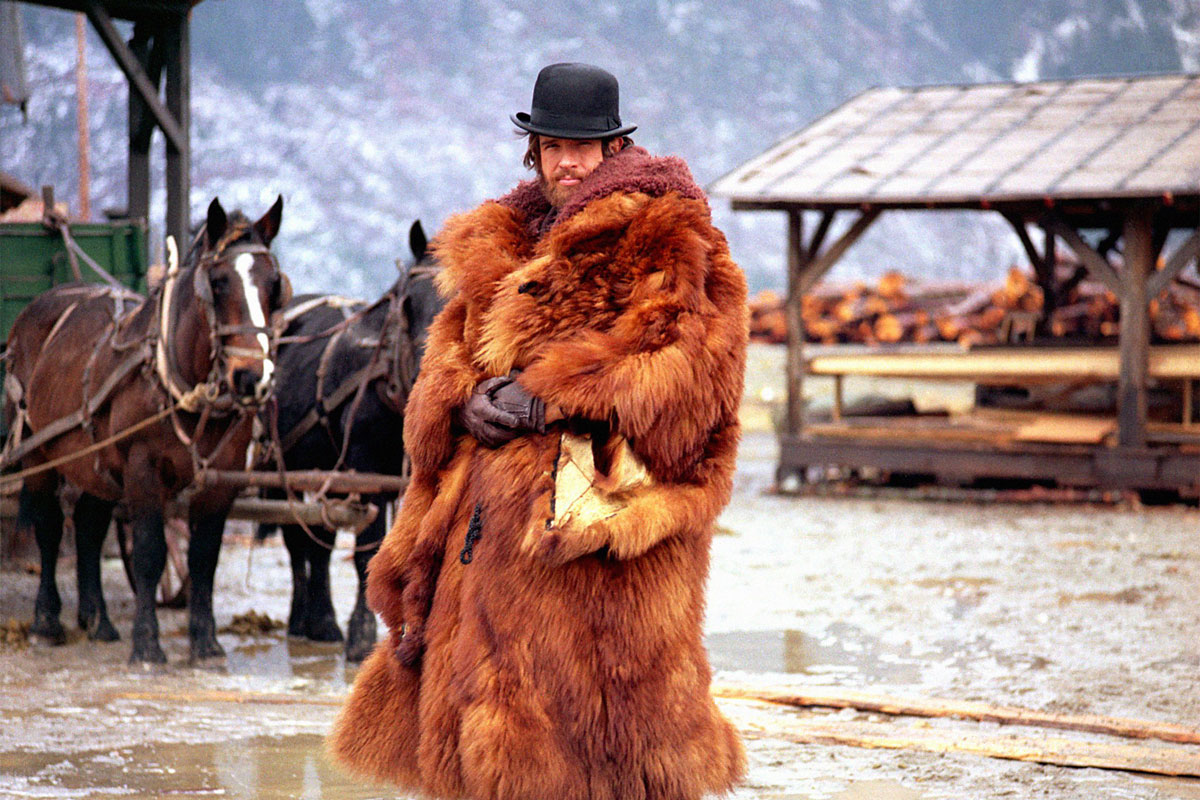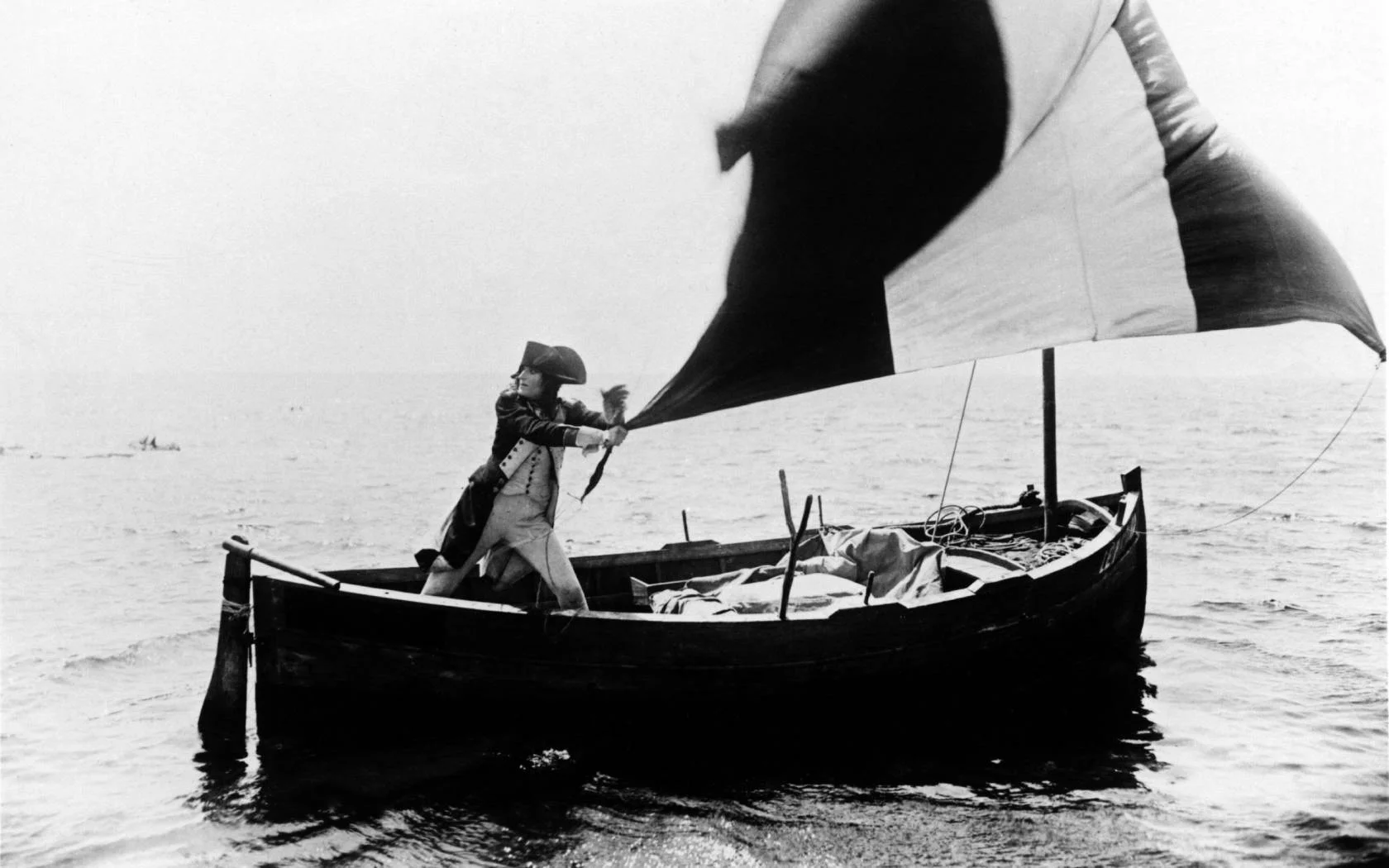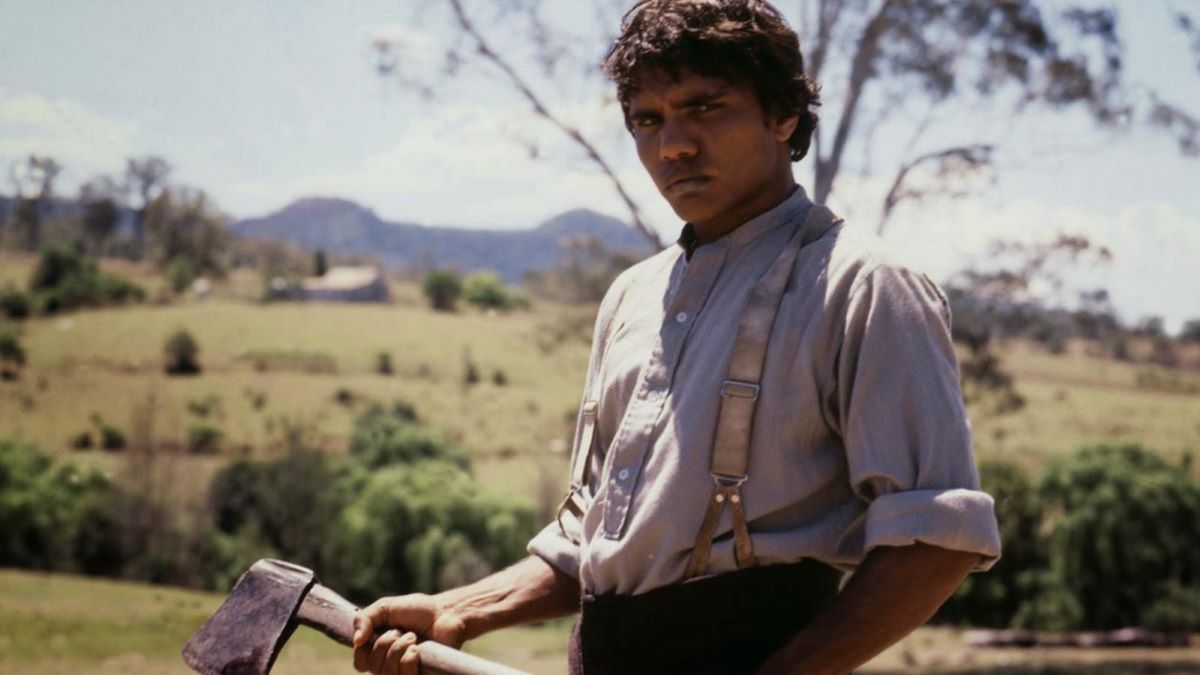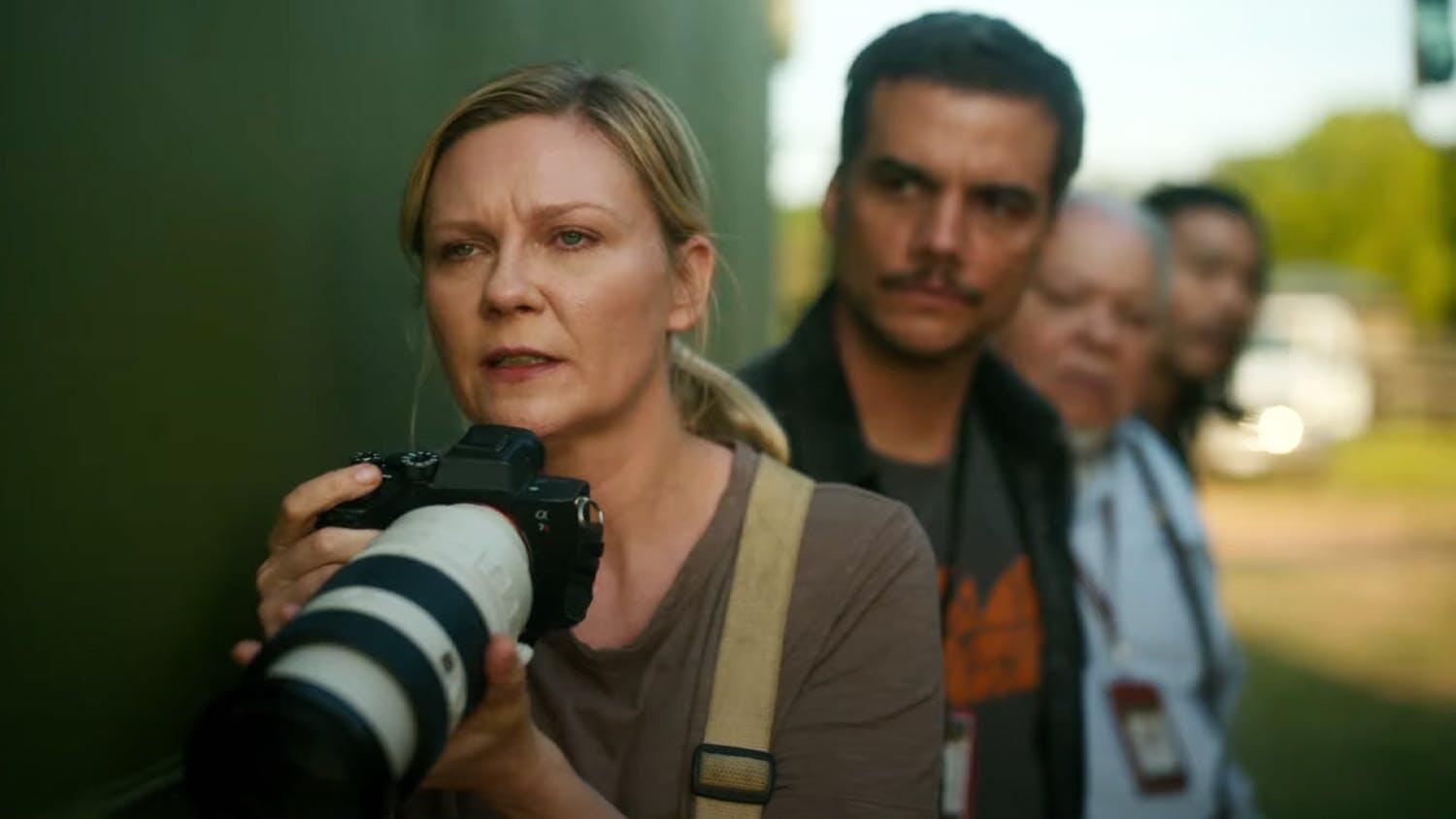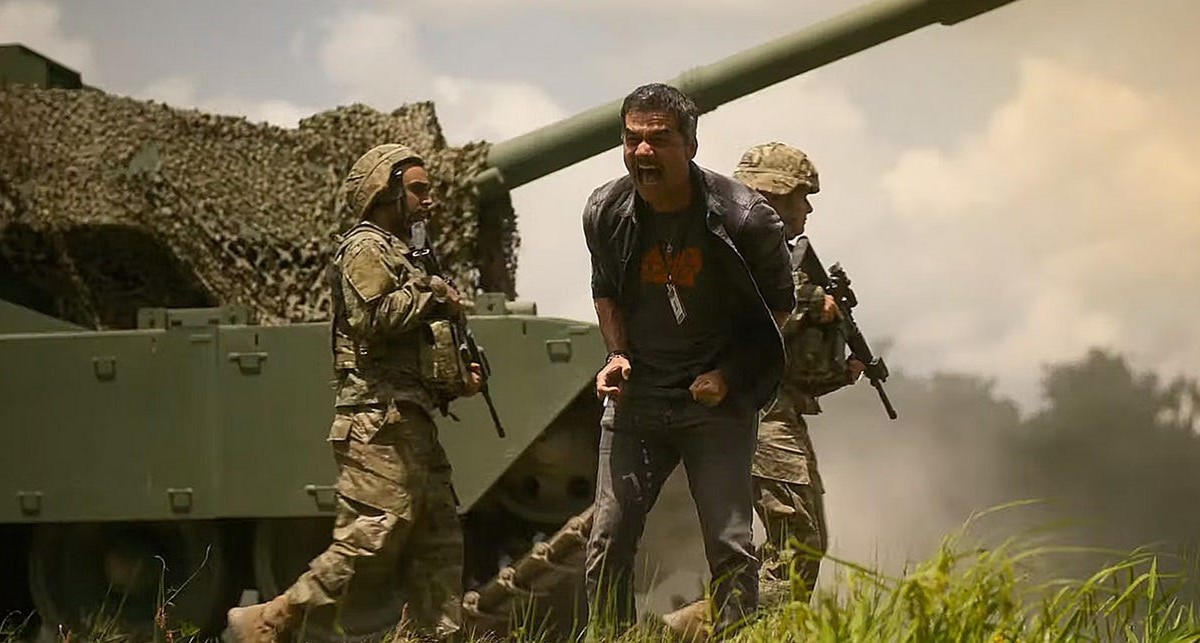Pipe Dream
by Pauline Kael
McCabe & Mrs. Miller is a beautiful pipe dream of a movie — a fleeting, almost diaphanous vision of what frontier life might have been. The film, directed by Robert Altman, and starring Warren Beatty as a small-time gambler and Julie Christie as an ambitious madam in the turn-of-the-century Northwest, is so indirect in method that it throws one off base. It’s not much like other Westerns; it’s not really much like other movies. We are used to movie romances, but this movie is a figment of the romantic imagination. Altman builds a Western town as one might build a castle in the air — and it’s inhabited. His stock company of actors turn up quietly in the new location, as if they were part of a floating crap game. Altman’s most distinctive quality as a director here, as in M*A*S*H, is his gift for creating an atmosphere of living interrelationships and doing it so obliquely that the viewer can’t quite believe it — it seems almost a form of effrontery. He has abandoned the theatrical convention that movies have generally clung to of introducing the characters and putting tags on them. Though Altman’s method is a step toward a new kind of movie naturalism, the technique may seem mannered to those who are put off by the violation of custom — as if he simply didn’t want to be straightforward about his storytelling. There are slight losses in his method — holes that don’t get filled and loose ends that we’re used to having tied up — but these losses (more like temporary inconveniences, really) are, I think, inseparable from Altman’s best qualities and from his innovative style.
There’s a classical-enough story, and it’s almost (though not quite) all there, yet without the usual emphasis. The fact is that Altman is dumping square conventions that don’t work anymore: the spelled-out explanations of motive and character, the rhymed plots, and so on — all those threadbare remnants of the “well-made” play which American movies have clung to. He can’t be straightforward in the old way, because he’s improvising meanings and connections, trying to find his movie in the course of making it-an incredibly risky procedure under modern union conditions. But when a director has a collaborative team he can count on, and when his instinct and his luck both hold good, the result can be a McCabe & Mrs. Miller. The classical story is only a thread in the story that Altman is telling. Like the wartime medical base in M*A*S*H, the West here is the life that the characters are part of. The people who drop m and out and the place —a primitive mining town —are not just background for McCabe and Mrs. Miller; McCabe and Mrs. Miller are simply the two most interesting people in the town, and we catch their stories, in glimpses, as they interact with the other characters and each other. But it isn’t a slice-of-life method, it’s a peculiarly personal one — delicate, elliptical. The picture seems to move in its own quiet time, and the faded beauty of the imagery works a spell. Lives are picked up and let go, and the sense of how little we know about them becomes part of the texture; we generally know little about the characters in movies, but since we’re assured that that little is all we need to know and thus all there is to know, we’re not bothered by it. Here we seem to be witnesses to a vision of the past — overhearing bits of anecdotes, seeing the irrational start of a fight, recognizing the saloon and the whorehouse as the centers of social life. The movie is so affecting it leaves one rather dazed. At one point, cursing himself for his inability to make Mrs. Miller understand the fullness of his love for her, McCabe mutters, “I got poetry in me. I do. I got poetry in me. Ain’t gonna try to put it down on paper . . . got sense enough not to try.” What this movie reveals is that there’s poetry in Robert Altman and he is able to put it on the screen. Emotionally far more complex than M*A*S*H, McCabe & Mrs. Miller is the work of a more subtle, more deeply gifted —more mysterious — intelligence than might have been guessed at from M*A*S*H.
The picture is testimony to the power of stars. Warren Beatty and Julie Christie have never been better, and they are the two most interesting people in the town. They seem to take over the screen by natural right — because we want to look at them longer and more closely. Altman brings them into focus so unobtrusively that it’s almost as if we had sorted them out from the others by ourselves. Without rigid guidelines, we observe them differently, and as the story unfolds, Beatty and Christie reveal more facets of their personalities than are apparent in those star vehicles that sell selected aspects of the stars to us. Julie Christie is no longer the androgynous starlet of Darling, the girl one wanted to see on the screen not for her performances but because she was so great-looking that she was compelling on her own, as an original. She had the profile of a Cocteau drawing — tawdry-classical — and that seemed enough: who could expect her to act? I think this is the first time (except, perhaps, for some of the early scenes in Doctor Zhivago) that I’ve believed in her as an actress — a warm and intense one — and become involved in the role she was playing, instead of merely admiring her extraordinary opaque mask. In this movie, the Cocteau girl has her opium. She’s a weird, hounded beauty as the junky madam Mrs. Miller — that great, fat underlip the only flesh on her, and her gaunt, emaciated face surrounded by frizzy ringlets. She’s like an animal hiding in its own fur. Julie Christie has that gift that beautiful actresses sometimes have of suddenly turning ugly and of being even more fascinating because of the crossover. When her nose practically meets her strong chin and she gets the look of a harpy, the demonstration of the thin line between harpy and beauty makes the beauty more dazzling — it’s always threatened. The latent qualities of the one in the other take the character of Mrs. Miller out of the realm of ordinary movie madams. It is the depth in her that makes her too much for the cocky, gullible McCabe; his inexpressible poetry is charming but too simple. An actor probably has to be very smart to play a showoff so sensitively; Beatty never overdoes McCabe’s foolishness, the way a foolish actor would. It’s hard to know what makes Beatty such a magnetic presence; he was that even early in his screen career, when he used to frown and loiter over a line of dialogue as if he hoped to find his character during the pauses. Now that he has developed pace and control, he has become just about as attractive a screen star as any of the romantic heroes of the past. He has an unusually comic romantic presence; there’s a gleefulness in Beatty, a light that comes on when he’s onscreen that says “Watch this — it’s fun.” McCabe pantomimes and talks to himself through much of this movie, complaining of himself to himself; his best lines are between him and us. Beatty carries off this tricky yokel form of soliloquy casually, with good-humored self-mockery. It’s a fresh, ingenious performance; we believe McCabe when he says that Mrs. Miller is freezing his soul.
A slightly dazed reaction to the film is, I think, an appropriate one. Right from the start, events don’t wait for the viewers’ comprehension, as they do in most movies, and it takes a while to realize that if you didn’t quite hear someone’s words it’s all right — that the exact words are often expendable, it’s the feeling tone that matters. The movie is inviting, it draws you in, but at the opening it may seem unnecessarily obscure, perhaps too “dark” (at times it suggests a dark version of Sam Peckinpah’s genial miss The Ballad of Cable Hogue), and later on it may seem insubstantial (the way Max Ophüls’ The Earrings of Madame de . . . seemed — to some — insubstantial, or Godard’s Band of Outsiders). One doesn’t quite know what to think of an American movie that doesn’t pretend to give more than a partial view of events. The gaslight, the subdued, restful color, and Mrs. Miller’s golden opium glow, Leonard Cohen’s lovely, fragile, ambiguous songs, and the drifting snow all make the movie hazy and evanescent. Everything is in motion, and yet there is a stillness about the film, as if every element in it were conspiring to tell the same incredibly sad story: that the characters are lost in their separate dreams.
The pipe dreamer is, of course, Robert Altman. McCabe & Mrs. Miller seems so strange because, despite a great deal of noise about the art of film, we are unaccustomed to an intuitive, quixotic, essentially impractical approach to moviemaking, and to an exploratory approach to a subject, particularly when the subject is the American past. Improvising as the most gifted Europeans do has been the dream of many American directors, but few have been able to beat the economics of it. In the past few years, there have been breakthroughs, but only on sensational current subjects. Can an American director get by with a movie as personal as this — personal not as in “personal statement” but in the sense of giving form to his own feelings, some not quite defined, just barely suggested? A movie like this isn’t made by winging it; to improvise in a period setting takes phenomenal discipline, but McCabe & Mrs. Miller doesn’t look “disciplined,” as movies that lay everything out for the audience do. Will a large enough American public accept American movies that are delicate and understated and searching — movies that don’t resolve all the feelings they touch, that don’t aim at leaving us satisfied, the way a three-ring circus satisfies? Or do we accept such movies only from abroad, and then only a small group of us — enough to make a foreign film a hit but not enough to make an American film, which costs more, a hit? A modest picture like Claire’s Knee would probably have been a financial disaster if it had been made in this country, because it might have cost more than five times as much and the audience for it is relatively small. Nobody knows whether this is changing — whether we’re ready to let American moviemakers grow up to become artists or whether we’re doomed to more of those “hard-hitting, ruthlessly honest” American movies that are themselves illustrations of the crudeness they attack. The question is always asked, “Why aren’t there American Bergmans and Fellinis?” Here is an American artist who has made a beautiful film. The question now is “Will enough people buy tickets?”
New Yorker, July 3, 1971

